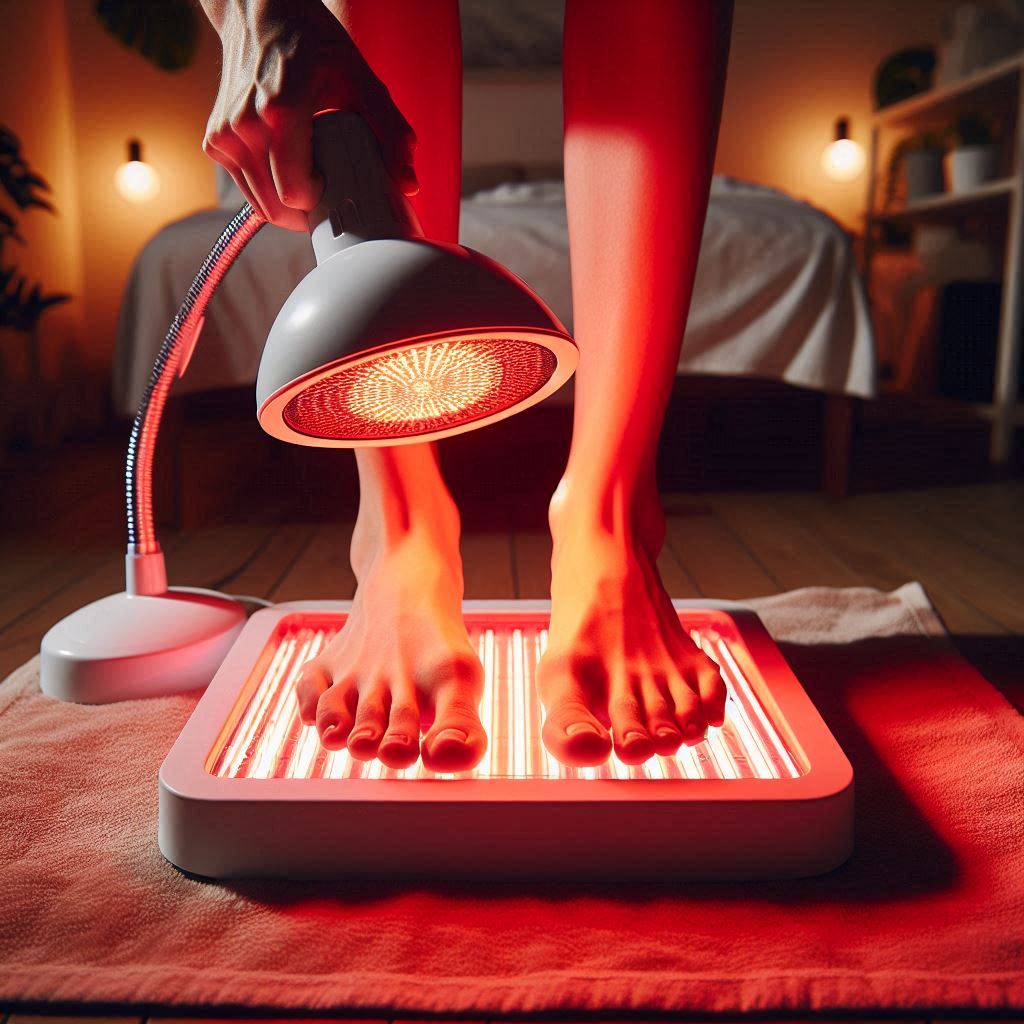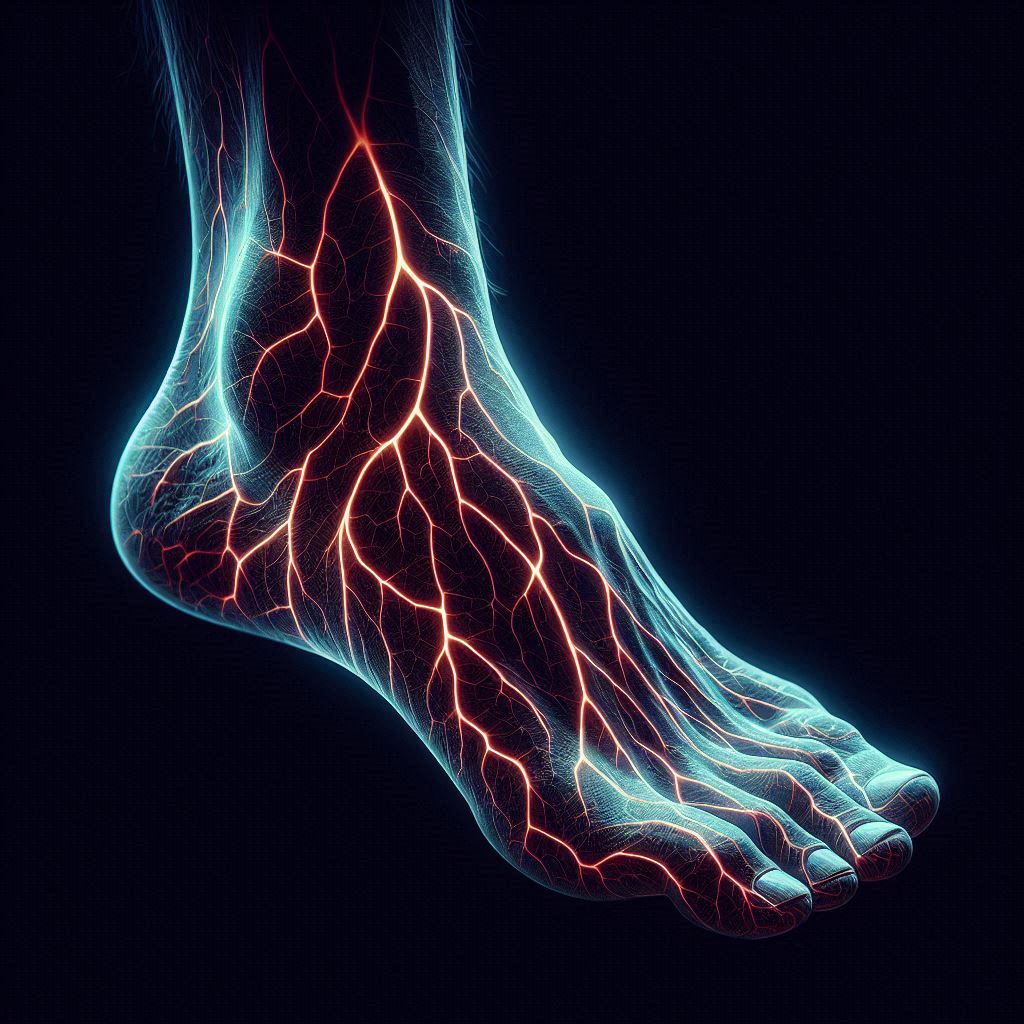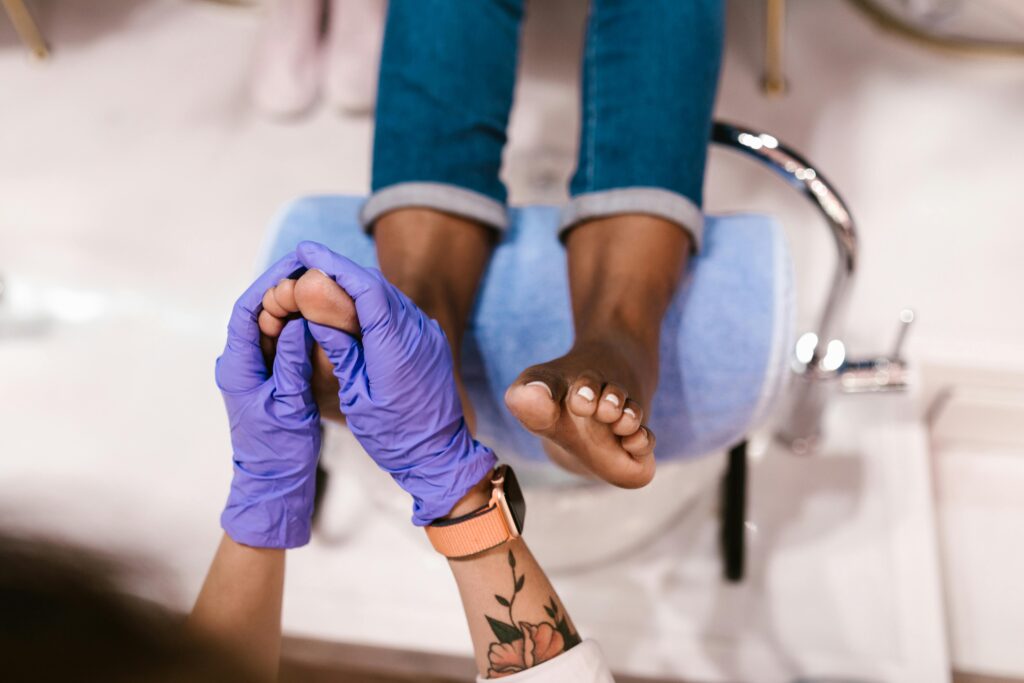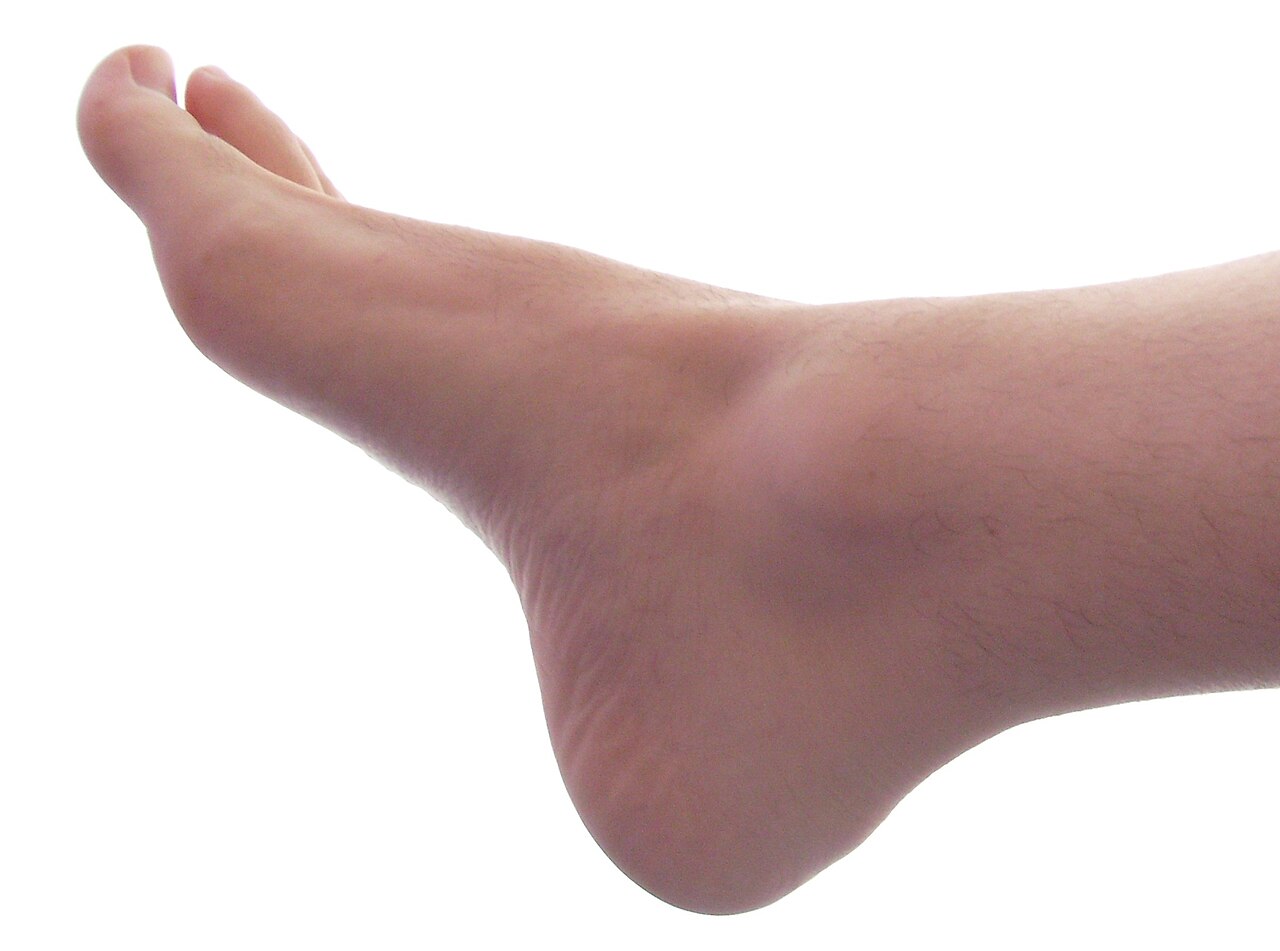Diabetic Foot Care: A Comprehensive Book Review
This briefing document about diabetic foot care is a book review that summarizes key themes and important information from our e-book Protecting Your Feet: A Diabetic’s Essential Handbook.
The goal of this e-book is to empower individuals with diabetes with information to actively manage their foot health and prevent complications.
This handbook provides a comprehensive guide to diabetic foot care, emphasizing self-management techniques. It covers daily foot inspections and hygiene, proper nail care using recommended tools (especially glass nail files), the therapeutic use of essential oils and foot massage, and the importance of appropriate footwear.
The handbook also highlights the crucial role of podiatric care, including when to seek professional help, and explores the potential benefits of near-infrared light therapy. Finally, it stresses the importance of preventative care to avoid serious complications.



Table of Contents
1. The Critical Importance of Diabetic Foot Care:
Let’s continue with the book review. The introduction of our handbook stresses the vital role of foot care in diabetes management. High blood sugar can damage nerves and blood vessels in the feet, leading to decreased sensation, poor blood flow, and slow-healing wounds. This increases the risk of infections, ulcers, and even amputation.
Neglecting diabetic foot care can lead to severe consequences. High blood sugar levels can damage nerves and blood vessels in the feet, reducing sensation and impairing blood flow.”
2. Self-Care: The Cornerstone of Prevention:
While professional medical care is essential, the handbook emphasizes the importance of daily self-care practices to prevent complications.
Key Practices Highlighted:
- Daily Foot Inspection: Visually and tactilely checking for redness, swelling, cuts, blisters, or changes in temperature.
- Washing and Drying: Using warm water and mild soap, and gently drying, especially between toes.
- Moisturizing: Applying moisturizer to the top and bottom of feet, avoiding the area between the toes.
- Nail Trimming: Cutting nails straight across and smoothing with a file. Professional help is recommended if needed.
3. Essential Tools for Diabetic Foot Care:
The handbook recommends specific tools for safe and effective nail care, including high-quality clippers, a glass nail file, and podiatry scissors (if necessary). Sterilization of tools before and after each use is crucial to prevent infection.
4. A Gentle Approach with Essential Oils:
The handbook suggests incorporating essential oils into foot care routines, highlighting their natural soothing and healing properties.

“Every step matters when you have diabetes. Vigilance in foot care isn’t about fear; it’s about preserving the journey.”
Dr. Anya Sharma, Podiatric Specialist.
Recommended Oils: Lavender, Tea Tree, Peppermint, Eucalyptus, Rosemary, Geranium, Chamomile, Cedarwood, Frankincense, and Lemon.
Important Considerations: Always dilute essential oils, perform a patch test, avoid using on broken skin, and consult with a healthcare professional before use.
5. The Power of Foot Massage:
Regular foot massage is presented as a therapeutic practice to improve blood circulation, reduce pain, and promote relaxation.
Massage Techniques: Effleurage (gentle stroking), Petrissage (kneading), and Friction (circular rubbing).
The handbook cites several studies supporting the benefits of foot massage for people with diabetes.
6. Footwear: Choosing the Right Shoes:
Proper footwear is crucial for distributing pressure, absorbing shock, and preventing blisters and calluses.
Key Features of Diabetic Shoes: Wide toe box, cushioned insole, supportive upper, seamless interior, and adjustable closures.
The document also advises against wearing high heels, tight-fitting shoes, and flip-flops or sandals, as they offer inadequate support.
7. Weathering the Extremes: Foot Care in Hot and Cold Weather:
Specific advice is provided for managing foot health in extreme temperatures.
Hot Weather: Stay hydrated, wear breathable footwear, protect feet from sunburn, keep feet dry, avoid extreme heat, and inspect feet daily.
Cold Weather: Wear warm socks, insulated footwear, protect feet from frostbite, use foot warmers cautiously, avoid constricting clothing, and inspect feet daily.
8. Professional Podiatry Care: A Vital Partner:
The handbook strongly recommends regular visits to a podiatrist, highlighting the specialized care they provide for individuals with diabetes.
Podiatrist Services: Foot examinations, nail care, callus and corn removal, custom orthotics, wound care, and patient education.
9. Near Infrared Light Therapy: A Promising Treatment Option:
NILT is presented as a non-invasive therapy that may help improve blood flow, reduce inflammation, and promote nerve regeneration in diabetic feet.
While research is ongoing, the document highlights promising results and NASA’s involvement in studying NILT’s potential. However, it stresses the importance of consulting with a doctor before starting NILT and emphasizes that it is not a cure-all.

10. Conclusion:
The handbook concludes by emphasizing the power of prevention through daily self-care practices, regular professional care, and informed choices about footwear and managing extreme temperatures. It encourages readers to subscribe to their membership website for additional resources and support.
Overall, the document provides a comprehensive overview of diabetic foot care, emphasizing the importance of self-management, professional care, and a proactive approach tpreventing complications.
Examining the Clarity and Comprehensiveness of the Sources
Clarity: The sources use straightforward language and a clear organizational structure, making the information easy to understand for individuals with diabetes. The step-by-step tutorials, such as the one for diabetic nail care, further enhance clarity by breaking down complex procedures into manageable steps1234.
Comprehensiveness: The sources cover a broad range of topics related to diabetic foot care.

Assessing the Practicality of Advice and Tips in the Sources
Overall, the advice and tips provided in the sources are practical and readily applicable for individuals with diabetes. The sources prioritize simple, everyday practices that can make a significant difference in foot health. By incorporating these practices into their routine and seeking professional guidance when necessary, individuals with diabetes can effectively manage their condition and reduce the risk of complications.
Strengths:
Comprehensive Information: The sources cover a wide spectrum of topics related to diabetic foot care, ranging from daily hygiene practices and essential tools to professional interventions and alternative therapies like essential oils and near-infrared light therapy . This breadth of information ensures that readers receive a well-rounded understanding of diabetic foot care.
● Practical Advice and Tips: The sources offer practical and actionable advice on various aspects of foot care, such as step-by-step guides for toenail trimming, recommendations for suitable footwear, and strategies for managing foot health in extreme temperatures.891011… This practical focus empowers readers to implement these tips into their daily routines.
Research-Backed Recommendations: The sources cite numerous research studies to support their claims, reinforcing the credibility of the information provided.20212223… This evidence-based approach instills confidence in readers that the advice they are receiving is grounded in scientific evidence.
Emphasis on Prevention: The sources consistently highlight the importance of preventative measures in diabetic foot care, emphasizing that early detection and prompt treatment are crucial for avoiding complications.293031 This proactive approach encourages readers to take ownership of their foot health and seek professional help when necessary.
Weaknesses:
Formal and Clinical Tone: While the information is clearly presented, the writing style tends to be formal and clinical, which might not resonate with all readers. A more conversational and relatable tone could make the material more engaging and encourage readers to connect with the information on a personal level.

Who is this book for?
Individuals newly diagnosed with diabetes would greatly benefit from reading this book.
The sources emphasize the importance of preventative measures in diabetic foot care and provide comprehensive information on daily practices that can significantly reduce the risk of complications. The book thoroughly explains the potential foot-related issues associated with diabetes, such as nerve damage (neuropathy) and poor circulation23.
Individuals already experiencing foot problems related to diabetes could also find this book valuable.
The sources address various foot care concerns, including nail care, callus and corn removal, wound care, and managing foot health in extreme temperatures. Additionally, the book discusses alternative therapies like essential oils and near-infrared light therapy, which may offer relief for existing foot problems.
Overall, the book is worth reading, especially for individuals with diabetes who are seeking practical guidance on managing their foot health. The sources provide research-backed advice and step-by-step instructions on various foot care practices671213.

Summarizing and Assessing the Book’s Value for Diabetic Readers
The main points of the review center on the strengths and weaknesses of the sources as a resource for diabetic readers seeking guidance on foot care.
The book is commended for its comprehensive coverage of a wide range of topics related to diabetic foot care, from daily hygiene practices to advanced treatments like near-infrared light therapy.
The practical advice and step-by-step instructions provided, along with the consistent emphasis on the importance of preventative measures, empower readers to take control of their foot health and minimize potential complications.
The review also highlights the fact that the sources’ recommendations are grounded in scientific evidence, citing numerous research studies to support the efficacy of various foot care practices. This evidence-based approach fosters trust in the information presented, assuring readers that the guidance they receive is reliable and credible.
However, the review acknowledges that the sources could be more effective by adopting a more engaging writing style. The formal and clinical tone might not appeal to all readers, and the repetitive structure, heavy reliance on lists and bullet points, and limited use of visuals could lead to a monotonous reading experience.
The final assessment of the book’s value is that it is a worthwhile read, particularly for individuals newly diagnosed with diabetes or those already experiencing foot problems related to the condition.
Bonuses Included Wit Your Purchase

We’ve included two amazing bonuses in the book:
20 Footcare Checklists including:
- Daily blood sugar checklist.
- My diabetes plate checklist.
- Eye care checklist.
- Travel checklist
- Kidney care checklist
- and more…
FREE Newsletter Subscription.
Follow On Tiktok To UNLOCK A Comprehensive Podcast Of The Book

